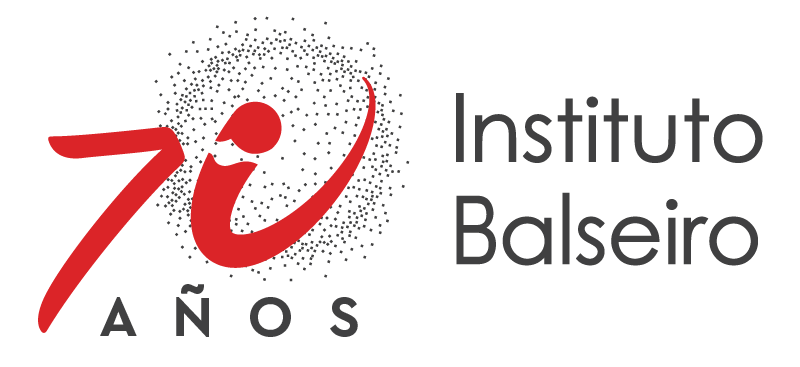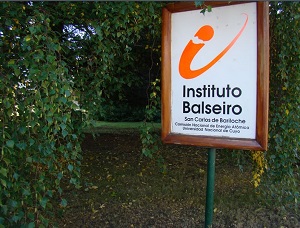COLOQUIOS DE LOS VIERNES EN EL INSTITUTO BALSEIRO: FEBRERO DE 2014
Desde hace 25 años, el Instituto Balseiro mantiene la tradición de realizar coloquios sobre diversos campos de la ciencia y tecnología, y también sobre temas que trascienden sus fronteras. Tienen lugar todos los viernes a las 14.30 hs. en su salón de actos, en el Centro Atómico Bariloche. Los coordinadores actuales de este ciclo de eventos de gran importancia para la vida académica del IB son los doctores Mariano Cantero y Gonzalo Usaj. Contacto: mcantero@cab.cnea.gov.ar; y usaj@cab.cnea.gov.ar. Aquí, toda la información sobre el mes de febrero.
Fecha de publicación: 21/04/2014
En el mes de febrero, hubo tres coloquios. El primero se realizó el viernes 7 de febrero y estuvo a cargo de Patrycja Paruch, de la Université de Genève, de Suiza. El título de su charla fue “Ferroelectric domain walls as pathways to novel functional properties”. El segundo, tuvo lugar el 21 de febrero, y el expositor a cargo fue Tony Noble, de Queen´s University and SNOLAB. Su charla se tituló: “How to Understand the Universe from a Hole in the Ground”. Por último, el 28 de febrero fue el turno de Gabriel Mindlin, del Departamento de Física de la Universidad de Buenos Aires, que habló sobre “La neurociencia del canto de las aves en coordenadas motoras”.
La mayor parte del público que asiste a los coloquios de los viernes está compuesto por docentes y alumnos del Instituto Balseiro, y también investigadores de los distintos grupos del Centro Atómico Bariloche. Las puertas están abiertas a todo el público interesado. Y las charlas que son de divulgación se anuncian con antelación a través de los medios de comunicación para invitar a toda la comunidad de Bariloche.
RESÚMENES DE LOS COLOQUIOS DE FEBRERO -2014
1-COLOQUIO DEL VIERNES 7 DE ABRIL DE 2014:
*Título: “Ferroelectric domain walls as pathways to novel functional properties”
*Expositor: Patrycja Paruch DPMC-MaNEP, Université de Genève, Switzerland
*Resumen de la charla, presentado por el expositor:
“In ferroelectric materials, domains with different polarisation orientation are separated by thin interfaces known as domain walls. Here, intrinsic effects such as the change/ breaking of crystal symmetry or modification of the electronic structure, as well as extrinsic effects such as charge/defect segregation can lead to novel functional properties, quite different from those of the parent phase. The extreme localisation of such properties at the intrinsically nanoscale domain walls could make them potentially useful as active components in future miniaturized electronic devices. Particularly exciting has been the discovery of domain-wall-specific electrical conductivity, shown first in multiferroic BiFeO3, and assigned to a wide range of different microscopic mechanisms, including both conduction and displacement currents. Here, I will present our generalisation of these observations to the simpler, canonical ferroelectric Pb(Zr,Ti)O3, using a combined piezo-response force microscopy and conductive atomic force microscopy approach at different time scales. I will highlight the emerging consensus about the key role of oxygen vacancies, and show how in Pb(Zr,Ti)O3 the density of these defects can be modulated to reversibly control domain wall transport. In the same ferroelectric samples, we also find an unusual piezoelectric shear response, forbidden by symmetry in the parent phase but permitted at domain walls as a result of the local symmetry breaking due to local polarisation reversal. Such an enhanced shear response, which we generalised also to multiferroic BiFeO3, could be technologically important for ferroelectric based surface acoustic wave devices”.
2-COLOQUIO DEL VIERNES 21 DE ABRIL DE 2014:
*Título: “How to Understand the Universe from a Hole in the Ground”
*Expositor: Tony Noble Queen´s University and SNOLAB
*Resumen de la charla, presentado por el expositor:
“We live in exciting times. Overwhelming evidence from high precision astronomical measurements and cataclysmic supernova explosions has led to an understanding of the Universe as one dominated by mysterious forms of dark matter and dark energy. The nature of this dark matter and dark energy is completely unknown, but the race is on world-wide. Sequestered 2 km underground in the SNOLAB facility for astroparticle physics, several new projects are underway that are attempting to observe this dark matter directly. Other experiments at SNOLAB are studying the properties of neutrinos and their possible link to the matter-antimatter asymmetry observed in the Universe today. These elusive neutrinos are also being used as tools to probe the inner processes of stars and supernova explosions.
This talk will describe a few of the innovative experiments being performed at SNOLAB, the physics potential that could be realized in the next few years, and end with an outlook for the future of astroparticle physics.”
3-COLOQUIO DEL VIERNES 28 DE ABRIL DE 2014:
*Título: “La neurociencia del canto de las aves en coordenadas motoras”
*Expositor: Gabriel Mindlin, Depto. de Física UBA
*Resumen de la charla, presentado por el expositor:
“El canto de las aves oscinas es un modelo muy establecido en la neurociencia para estudiar como un cerebro se reconfigura, mediante la experiencia, para lograr la ejecución de un comportamiento complejo. Decodificar los patrones de actividad de las distintas áreas cerebrales involucradas en la ejecución del comportamiento, así como los mecanismos de aprendizaje en juego, ha probado ser una tarea extraordinariamente compleja. En este coloquio describiremos un programa de investigación que hemos llevado a cabo en los últimos 10 años en el laboratorio de sistemas dinámicos del Depto. de Física de la FCEyN, UBA, orientado a estudiar este problema comenzando por el sistema perisférico. Mostraremos como la comprensión de la biomecánica involucrada comenzó a echar una nueva luz sobre los mecanismos neuronales involucrados.”
—
Área de Comunicación Institucional
Instituto Balseiro
San Carlos de Bariloche, 21/04/2014

